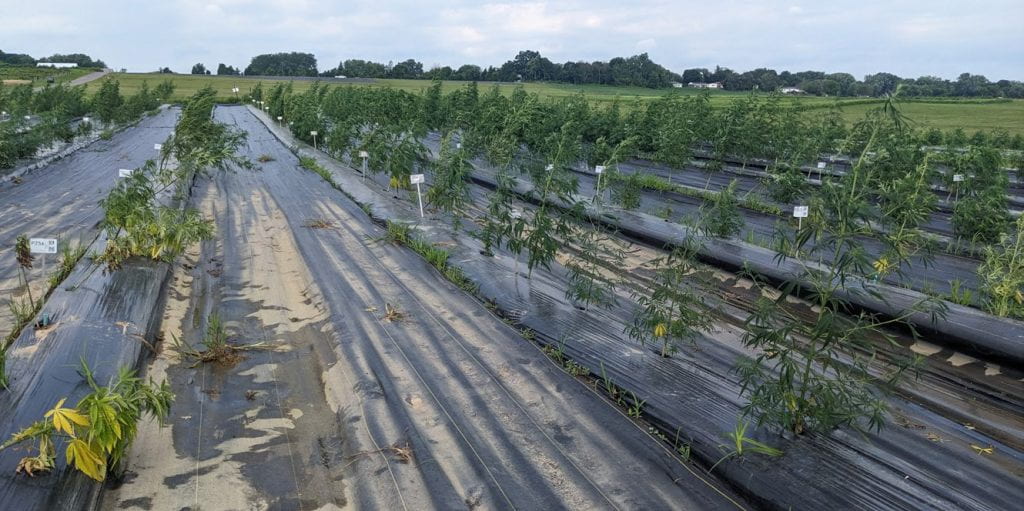Jocelyn Schwartz and Christine D. Smart
January 2024
Printer-friendly .pdf version of this factsheet.
Take home message:
Understanding and adapting to the influence of weather on disease progression is the key to safeguarding your hemp crop. Reducing leaf wetness is vital to prevent disease progression
and optimize hemp yields.

Regular weather monitoring
- Regularly monitor weather conditions, especially temperature, humidity, and rainfall, as these factors significantly influence disease progression.
- Use local weather data and forecasts to anticipate disease risk and take preventive measures.
Implement preventative measures
- Adjust planting and spacing to promote air circulation and reduce humidity, particularly in regions with high humidity and frequent rainfall.
Integrated disease management
- Adopt integrated disease management strategies that incorporate cultural practices, resistant cultivars and, when necessary, disease control products.
- Be prepared to adjust disease management practices based on weather conditions to prevent and mitigate outbreaks effectively.
For up-to-date IPM forecasts and weather data: visit the NEWA website.


Weather threats
Wind: Can help reduce humidity around plants by promoting air circulation, which is beneficial for many diseases, but strong winds can physically damage plants and may aid in the spread of pathogens.
- Management: Utilize plant and row spacing that encourage air movement. Schedule sprays during calm, windless periods to ensure better coverage and efficacy.
Humidity: Encourages spore production, germination, and disease spread.
- Management: Schedule preventive sprays during periods of high humidity to inhibit disease development. Manage canopy density and plant spacing to reduce humidity levels.
Rainfall: Helps spread pathogens and promotes foliar diseases when leaves remain wet for extended periods.
- Management: Apply protective treatments before anticipated rain events. Focus on drainage and proper soil preparation to reduce waterlogging risks.
Temperature: Different diseases have specific temperature thresholds for development.
- Management: Use disease models and local weather forecasts to predict temperature fluctuations and plan treatment accordingly. Adjust planting times to avoid peak periods of temperature-related disease development.
Disease-specific considerations
- Powdery mildew: low light, moderate temperatures, high humidity
- Downy mildew: cool temperatures, high humidity
- Septoria leaf spot: warm temperatures, excessive rain, high humidity
- Pythium and fusarium wilt: broad temperature ranges, standing water
- Botrytis gray mold: high humidity and poor airflow
More information
- Jocelyn Schwartz jas975@cornell.edu
- Christine D. Smart cds14@cornell.edu